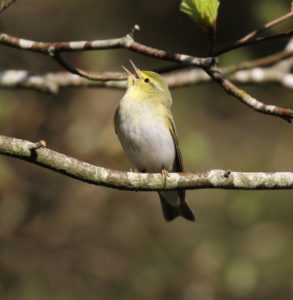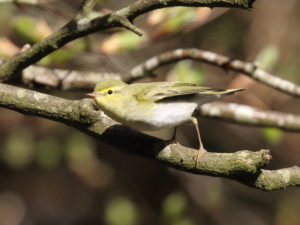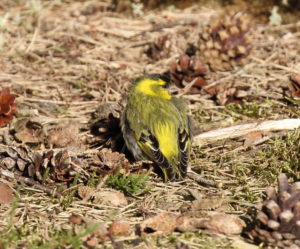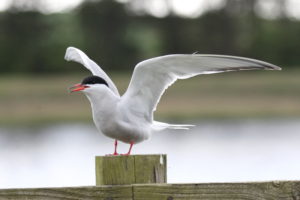This sadly declining County summer visitor, can in some years, prove quite tricky to see. Once reasonably abundant in the right mature woodland habitat, with 11 singing males one year back in the eighties at Beacon Hill, near Morpeth for example, Allenbanks is perhaps the stronghold these days, with five or six males usually found singing. However, restricted access this year due to landslips and fallen trees destroying parts of the footpath, not to mention the loss, for the second recent time, of the suspension footbridge destroyed in floods, has dented the chances of success at this site. A walk in last week, from the southern end at Plankey Mill, revealed no birds singing with the same result today. Another site, Langley Castle also drew a blank. However, undaunted I pushed on to Hareshaw Linn at Bellingham, where one male was gladly seen and heard well. Sidwood next and better luck at this another traditional site, with a showy male singing for most of the two hours I was in the area.

 With his mate, he was inspecting possible nest-sites in the grass, in-between bursts of song and feeding. A rival male also sang from within the wood here with a third 3/4 of a mile down the road. Here too Spotted Flycatchers do well, with four pairs noted. Siskins and Redpolls were common and a Cuckoo called along the Tarset Burn.
With his mate, he was inspecting possible nest-sites in the grass, in-between bursts of song and feeding. A rival male also sang from within the wood here with a third 3/4 of a mile down the road. Here too Spotted Flycatchers do well, with four pairs noted. Siskins and Redpolls were common and a Cuckoo called along the Tarset Burn.

Near Stonehaugh, two pairs of Swallows have completed nests in a hill-side cave, unusual to find. Two Green Woodpeckers seen and heard in stream-side trees and a few Redstarts, Dipper, Willow Warblers, Grey Wagtail (feeding Young) and another Cuckoo noted. At Bellingham, a Raven sparred with a pair of Buzzards, before landing in a conifer wood. Three male and a female Wheatear seen near Stonehaugh and perhaps more unusually, a singing Sedge Warbler. A flock of 15 Crossbills alighted in pines, a male singing and 4 Jays together on the ground, feeding.

Heading past Whittle Dene, a total of 13 pairs of Common Terns were here and a Yellow Wagtail. Yellowhammers were singing along the lanes around this area, with 11 seen on hedge tops. Whitethroats too were in good numbers, and a few Sedge Warblers displaying.
A.S.Jack
